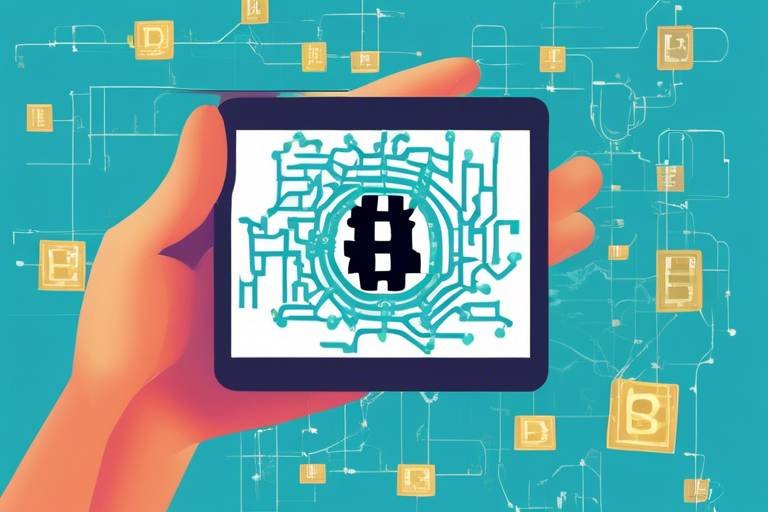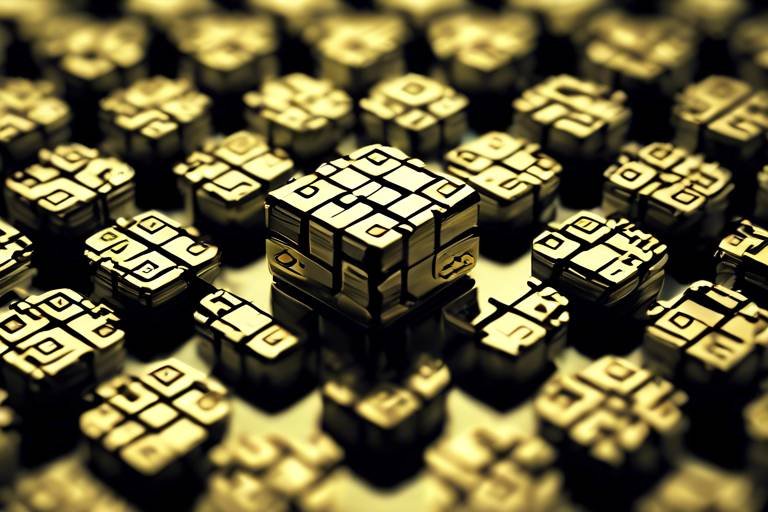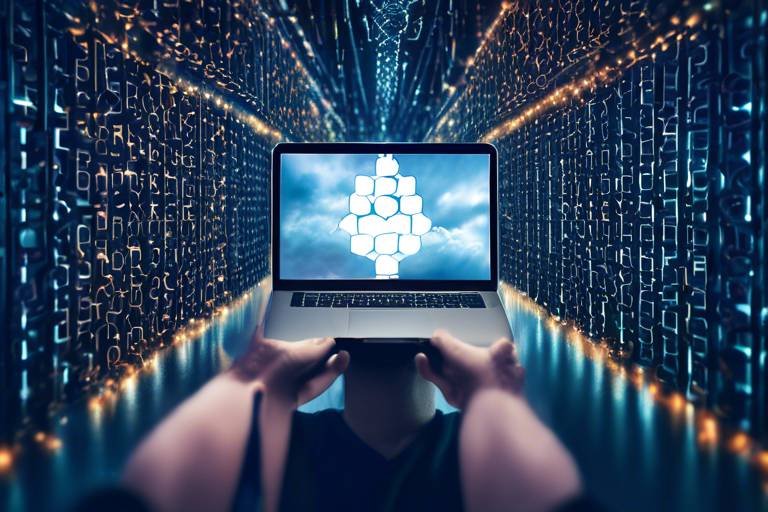The Role of Blockchain in Supporting Disaster Relief Operations
In recent years, the world has witnessed an alarming increase in natural disasters, from hurricanes and earthquakes to floods and wildfires. These catastrophic events not only devastate communities but also create significant challenges in delivering timely and effective humanitarian aid. Enter blockchain technology, a game-changer that is revolutionizing the way disaster relief operations are conducted. By leveraging the power of decentralization and transparency, blockchain offers innovative solutions that enhance the efficiency, accountability, and overall effectiveness of aid distribution.
Imagine a scenario where every donation made to a disaster relief fund is tracked in real-time, ensuring that every dollar reaches the intended recipients. With blockchain, this vision becomes a reality. The technology’s inherent characteristics—such as immutability and transparency—allow for a level of trust that is often lacking in traditional aid distribution methods. This article will delve into how blockchain is not just a buzzword but a vital tool that can transform disaster relief operations, making them more resilient and responsive to the needs of affected communities.
Before we dive deeper into its applications in disaster relief, it’s essential to understand what blockchain technology actually is. At its core, blockchain is a decentralized digital ledger that records transactions across multiple computers. This means that no single entity has control over the entire network, making it resistant to fraud and manipulation. Each transaction is grouped into blocks, which are then linked together in a chronological chain, hence the name 'blockchain'.
The decentralized nature of blockchain allows for various applications, particularly in scenarios where transparency and security are paramount. In disaster relief operations, blockchain can serve as a robust platform for tracking donations, managing resources, and ensuring that aid reaches those who need it most. By eliminating intermediaries, blockchain not only speeds up processes but also reduces the risk of corruption and mismanagement of funds.
One of the most significant advantages of blockchain technology in disaster relief is its ability to create immutable records. This feature ensures that once a transaction is recorded, it cannot be altered or deleted. As a result, stakeholders can have complete confidence that resources are being allocated appropriately, and aid is reaching the intended recipients without misappropriation.
Another fascinating aspect of blockchain is the use of smart contracts. These are self-executing contracts with the terms of the agreement directly written into code. In the context of disaster relief, smart contracts can automate various processes, such as the release of funds when specific conditions are met. This not only reduces the need for intermediaries but also expedites the delivery of aid to affected areas. Imagine a scenario where aid is automatically dispatched to a location as soon as a disaster is declared, without waiting for bureaucratic approvals. This level of automation can significantly enhance the efficiency of relief operations.
By minimizing paperwork and streamlining processes, blockchain can help disaster relief organizations reduce administrative costs. This means that more funds can be allocated directly to aid efforts instead of being consumed by overhead expenses. In a world where every dollar counts, this capability can make a real difference in the lives of those affected by disasters.
Blockchain technology enables real-time tracking of resources, ensuring that stakeholders have access to up-to-date information about the location and status of aid supplies. This transparency can help organizations coordinate their efforts more effectively, reducing the chances of duplicated efforts or wasted resources. For instance, if one organization is already providing food supplies to a particular area, others can redirect their resources to where they are most needed.
The transparency and security offered by blockchain can help build trust among various stakeholders involved in disaster relief efforts. Donors, NGOs, and government agencies can all benefit from the assurance that funds are being used effectively and responsibly. This trust is crucial for encouraging more significant contributions and collaboration among different entities, ultimately leading to a more robust and efficient disaster response.
To illustrate the potential of blockchain in disaster relief, let’s examine some real-world examples where this technology has been successfully implemented. These case studies highlight the benefits and lessons learned from various initiatives, showcasing innovative solutions that have made a tangible impact on communities in need.
One notable case is the use of blockchain in the aftermath of the 2017 hurricane season in Puerto Rico. Organizations utilized blockchain to track donations and ensure that relief supplies were delivered efficiently to affected areas. By providing a transparent and secure platform for managing donations, they were able to significantly improve the response time and effectiveness of relief efforts.
While the potential of blockchain in disaster relief is immense, it’s essential to acknowledge the challenges and limitations of using this technology. Issues such as technological barriers, scalability, and the need for stakeholder buy-in can hinder its widespread adoption. Additionally, not all regions have the necessary infrastructure to support blockchain technology, which can limit its effectiveness in certain disaster-stricken areas.
Looking ahead, the potential applications of blockchain technology in humanitarian aid and disaster relief are vast. Ongoing research and advancements in this evolving field continue to uncover new possibilities for improving the efficiency and effectiveness of aid distribution. As more organizations recognize the benefits of blockchain, we can expect to see an increasing number of innovative solutions that harness its power to support those in need during times of crisis.
- What is blockchain technology? Blockchain is a decentralized digital ledger that records transactions across multiple computers, ensuring transparency and security.
- How does blockchain enhance disaster relief efforts? It improves transparency, reduces administrative costs, and enables real-time tracking of resources.
- What are smart contracts? Smart contracts are self-executing contracts with the terms directly written into code, automating processes in disaster relief.
- What challenges does blockchain face in disaster relief? Challenges include technological barriers, scalability issues, and the need for stakeholder buy-in.
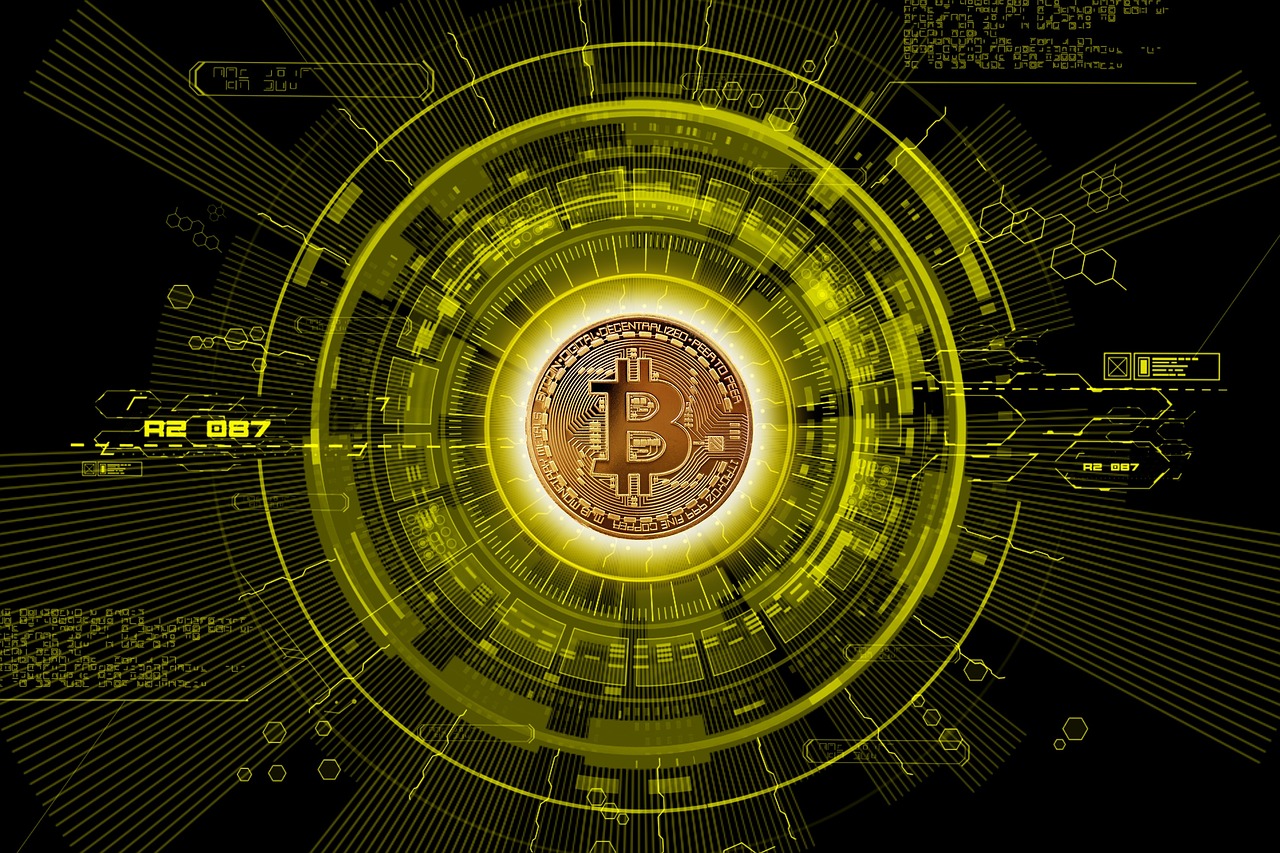
Understanding Blockchain Technology
Blockchain technology is a revolutionary concept that has been making waves across various industries, and it's essential to grasp its fundamentals to appreciate its potential in disaster relief operations. At its core, blockchain is a decentralized digital ledger that records transactions across numerous computers in such a way that the registered transactions cannot be altered retroactively. This means that once information is entered into the blockchain, it is virtually tamper-proof, creating a level of security and trust that is indispensable in times of crisis.
Imagine a digital notebook that everyone can see but no one can erase or change. This is essentially how blockchain operates. Each block in the chain contains a number of transactions, and every time a new transaction occurs, a record is added to every participant's ledger. This decentralization eliminates the need for a central authority, which can often be a bottleneck in traditional systems. In disaster relief scenarios, this characteristic is particularly valuable because it allows for quicker decision-making and resource allocation.
To dive deeper, let’s break down some of the fundamental principles of blockchain technology:
- Decentralization: Unlike traditional databases that are controlled by a single entity, blockchain distributes the data across a network of computers, making it less vulnerable to failures and fraud.
- Transparency: All transactions on the blockchain are visible to all participants, enhancing accountability and reducing the chances of corruption.
- Immutability: Once data is recorded on the blockchain, it cannot be altered without the consensus of the network, ensuring the integrity of the information.
- Security: Advanced cryptography protects data, making it extremely difficult for unauthorized users to manipulate the information.
These principles create a robust framework that can significantly improve disaster relief efforts. For example, during a natural disaster, the immediate need for aid can lead to chaos and mismanagement. With blockchain, the distribution of resources can be tracked in real-time, ensuring that help reaches those who need it most without delay. Additionally, the use of smart contracts—self-executing contracts with the terms of the agreement directly written into code—can automate various processes, making the entire operation more efficient.
In summary, understanding blockchain technology is crucial for recognizing its transformative potential in disaster relief. Its ability to ensure transparency, security, and efficiency can drastically change how aid is distributed, making it a game-changer in humanitarian efforts. As we delve further into this article, we will explore how these principles are applied in real-world scenarios and the profound impact they can have on saving lives during emergencies.

Enhancing Transparency in Aid Distribution
In the chaotic aftermath of a disaster, the distribution of aid can often resemble a game of telephone—messages get distorted, resources can be misallocated, and the very people who need help the most may find themselves left in the lurch. This is where blockchain technology steps in as a game changer. By leveraging its immutable records and decentralized nature, blockchain creates a transparent framework for aid distribution that can be trusted by all stakeholders involved. Imagine a world where every dollar donated can be traced directly to the person it was intended to help. Sounds like a dream, right? Well, with blockchain, that dream is becoming a reality.
One of the most significant advantages of blockchain is its ability to maintain a ledger that is not only secure but also accessible to all parties involved. This means that donors, NGOs, and government agencies can all view the same data regarding the distribution of aid. No more second-guessing or worrying about where the funds are going. For instance, if a donor contributes to a relief fund, they can track exactly how that money is being spent, from the moment it leaves their hands to when it reaches the intended recipients. This level of transparency fosters a sense of accountability that is crucial in disaster relief scenarios.
Furthermore, blockchain technology allows for the creation of smart contracts, which can automate the distribution process based on predefined conditions. For example, a smart contract could stipulate that a certain amount of aid is released only when specific criteria are met, such as the verification of a disaster zone by authorized agencies. This not only speeds up the process but also reduces the potential for fraud and mismanagement. In essence, it’s like having a digital watchdog that ensures every step is followed correctly.
To illustrate the impact of blockchain on transparency, consider the following table:
| Feature | Traditional Aid Distribution | Blockchain-Enabled Distribution |
|---|---|---|
| Transparency | Limited; relies on reports | Real-time, accessible ledger |
| Accountability | Often unclear | Clear tracking of funds |
| Fraud Prevention | Vulnerable to mismanagement | Smart contracts reduce risk |
| Speed of Distribution | Can be slow and cumbersome | Automated processes expedite delivery |
The implications of these advancements are profound. With enhanced transparency, not only can organizations ensure that aid reaches those who need it most, but they can also build trust with donors. When people see that their contributions are making a tangible difference, they are more likely to continue supporting these initiatives. In a world where skepticism about charitable organizations is rampant, blockchain offers a beacon of hope, shining a light on the path of integrity and efficiency in disaster relief.
As we move forward, it’s crucial to understand that while blockchain is not a silver bullet for all the challenges faced in disaster relief, it certainly provides a robust framework for enhancing transparency. The combination of real-time data tracking, accountability, and automated processes creates an environment where aid can be distributed more effectively, ensuring that every effort counts in the race to help those affected by disasters.
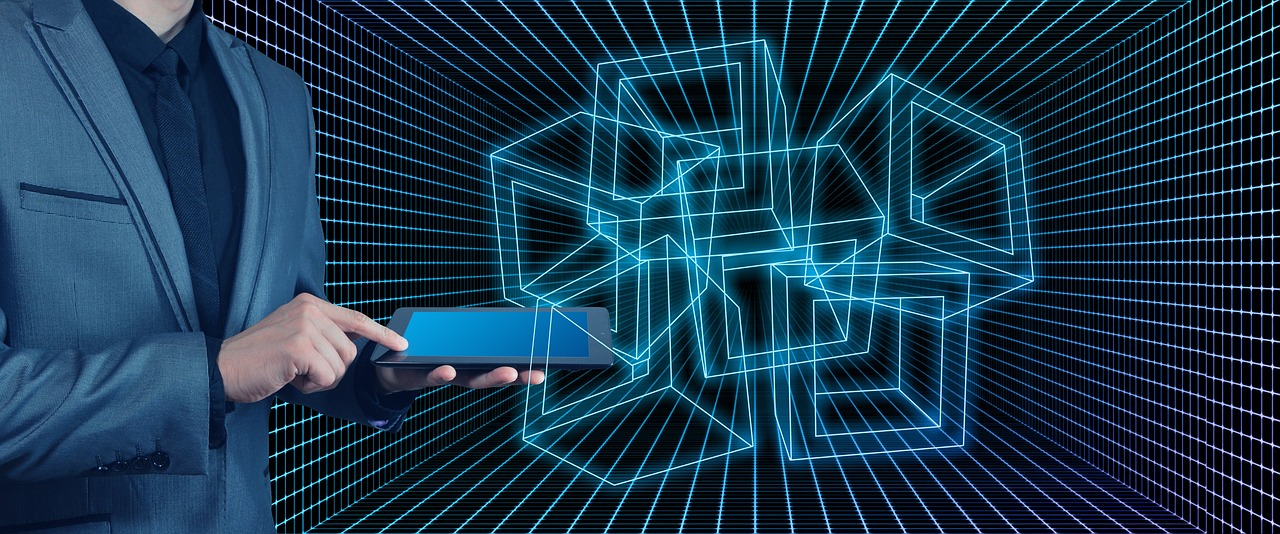
Smart Contracts for Automated Processes
When we think about the chaos that often accompanies disaster relief operations, it's clear that timing and efficiency are paramount. Smart contracts, a groundbreaking feature of blockchain technology, can play a pivotal role in automating various processes that are crucial for delivering aid swiftly and effectively. Imagine a world where the distribution of resources is not bogged down by endless paperwork and bureaucratic red tape; that's exactly what smart contracts aim to achieve.
At their core, smart contracts are self-executing contracts with the terms of the agreement directly written into code. This means that once certain conditions are met, the contract executes automatically, without the need for intermediaries. For example, in a disaster scenario, a smart contract could be programmed to release funds to a relief organization once a specific milestone—like reaching a certain number of affected individuals—has been verified. This not only speeds up the process but also minimizes the risk of human error or manipulation.
One of the standout advantages of utilizing smart contracts in disaster relief is their ability to enhance accountability. Each transaction and action taken within the smart contract is recorded on the blockchain, creating an immutable audit trail. This transparency is crucial for stakeholders, including donors and NGOs, who want to ensure their contributions are being used effectively. With a few clicks, they can verify that funds were allocated as intended, and resources were delivered to the right places.
Furthermore, smart contracts can facilitate real-time data sharing among various parties involved in the relief efforts. For instance, imagine a scenario where multiple NGOs are working in tandem after a natural disaster. A smart contract can ensure that all parties have access to the same data regarding resource availability and needs, thus avoiding duplication of efforts and ensuring that every affected individual receives the help they need. In this way, smart contracts can act as a digital glue, binding together various stakeholders in a cohesive and efficient manner.
In summary, smart contracts represent a significant leap forward in how disaster relief operations can be managed. They not only automate processes but also enhance transparency and accountability, fostering trust among all parties involved. As we continue to explore the potential of blockchain technology in humanitarian efforts, the role of smart contracts will undoubtedly become more pronounced, paving the way for a more efficient and effective response to disasters.
- What are smart contracts? Smart contracts are self-executing contracts with the agreement terms directly written into code, automating processes and reducing the need for intermediaries.
- How do smart contracts enhance transparency? They create an immutable audit trail on the blockchain, allowing stakeholders to verify transactions and ensure funds are used correctly.
- Can smart contracts be used in other fields? Yes, smart contracts have applications across various industries, including finance, real estate, and supply chain management, in addition to disaster relief.
- What challenges do smart contracts face? Challenges include technological barriers, the need for widespread adoption, and ensuring that all parties agree on the terms of the contract.
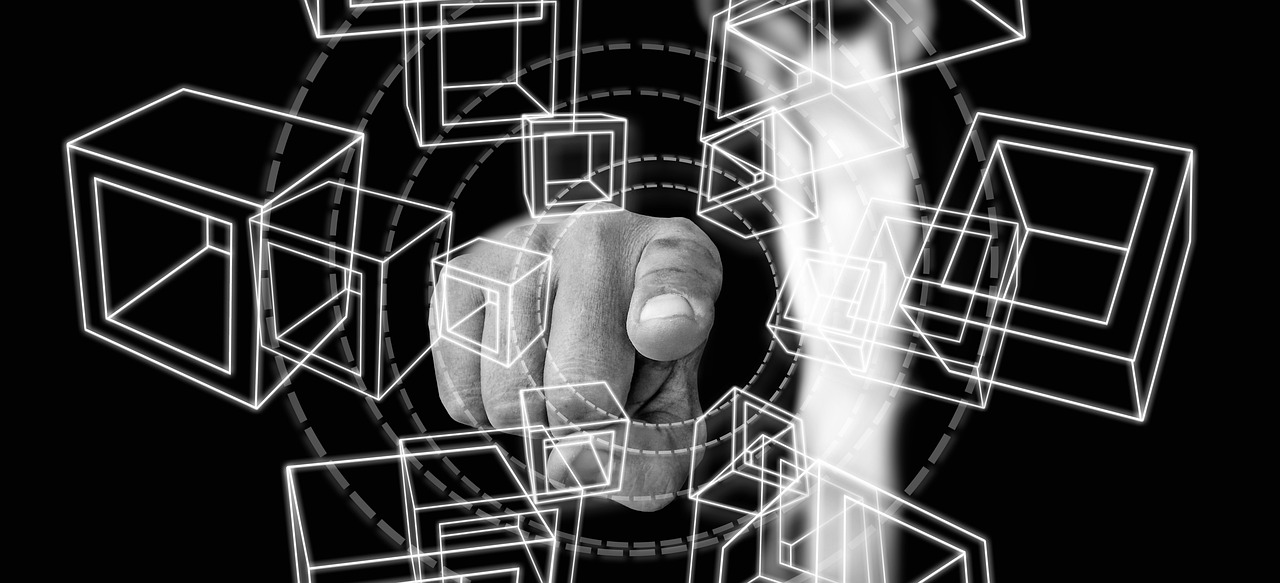
Reducing Administrative Costs
In the world of disaster relief, every penny counts. When a natural disaster strikes, organizations are often faced with the daunting task of mobilizing resources quickly and efficiently. One of the most significant hurdles they encounter is the burden of administrative costs. These costs can eat away at the funds that are meant to provide immediate assistance to those in need. This is where blockchain technology comes into play, offering a revolutionary solution that can dramatically reduce these overhead expenses.
By utilizing blockchain, disaster relief organizations can streamline their operations, cutting down on the need for excessive paperwork and minimizing the time spent on administrative tasks. Imagine a world where every transaction is recorded in a secure, immutable ledger, accessible to all stakeholders involved. This not only simplifies the process but also ensures that resources are allocated efficiently. With traditional methods, organizations often face delays due to the need for verification and approvals, which can slow down the delivery of aid. However, with blockchain, the process becomes more fluid, allowing for quicker decision-making and faster response times.
Moreover, smart contracts play a crucial role in this efficiency. These self-executing contracts automatically enforce the terms of an agreement once the conditions are met, eliminating the need for intermediaries. For instance, if a particular amount of aid is required at a specific location, a smart contract can trigger the release of funds or materials as soon as the conditions are verified on the blockchain. This not only speeds up the process but also reduces the administrative burden on organizations, allowing them to focus their resources on providing aid rather than managing paperwork.
To illustrate the potential savings, consider the following table that compares traditional administrative costs with those associated with blockchain technology in disaster relief operations:
| Cost Category | Traditional Methods | Blockchain Methods |
|---|---|---|
| Verification and Approval | $10,000 | $2,000 |
| Paperwork and Documentation | $5,000 | $1,000 |
| Intermediary Fees | $8,000 | $500 |
| Total Administrative Costs | $23,000 | $3,500 |
As you can see, the potential for savings is significant. By adopting blockchain technology, disaster relief organizations can redirect the funds saved on administrative costs directly into aid efforts. This means more food, shelter, and medical assistance for those affected by disasters. Ultimately, the ability to reduce administrative overhead not only enhances the operational efficiency of these organizations but also fosters a more responsive and effective humanitarian effort.
In conclusion, the integration of blockchain technology in disaster relief operations is not just a futuristic idea; it's a practical solution that addresses a pressing need. By reducing administrative costs, organizations can maximize their impact, ensuring that help reaches those who need it most, when they need it. The potential of blockchain to transform disaster relief is immense, and as more organizations recognize this, we can expect to see a shift towards a more efficient and effective humanitarian response.
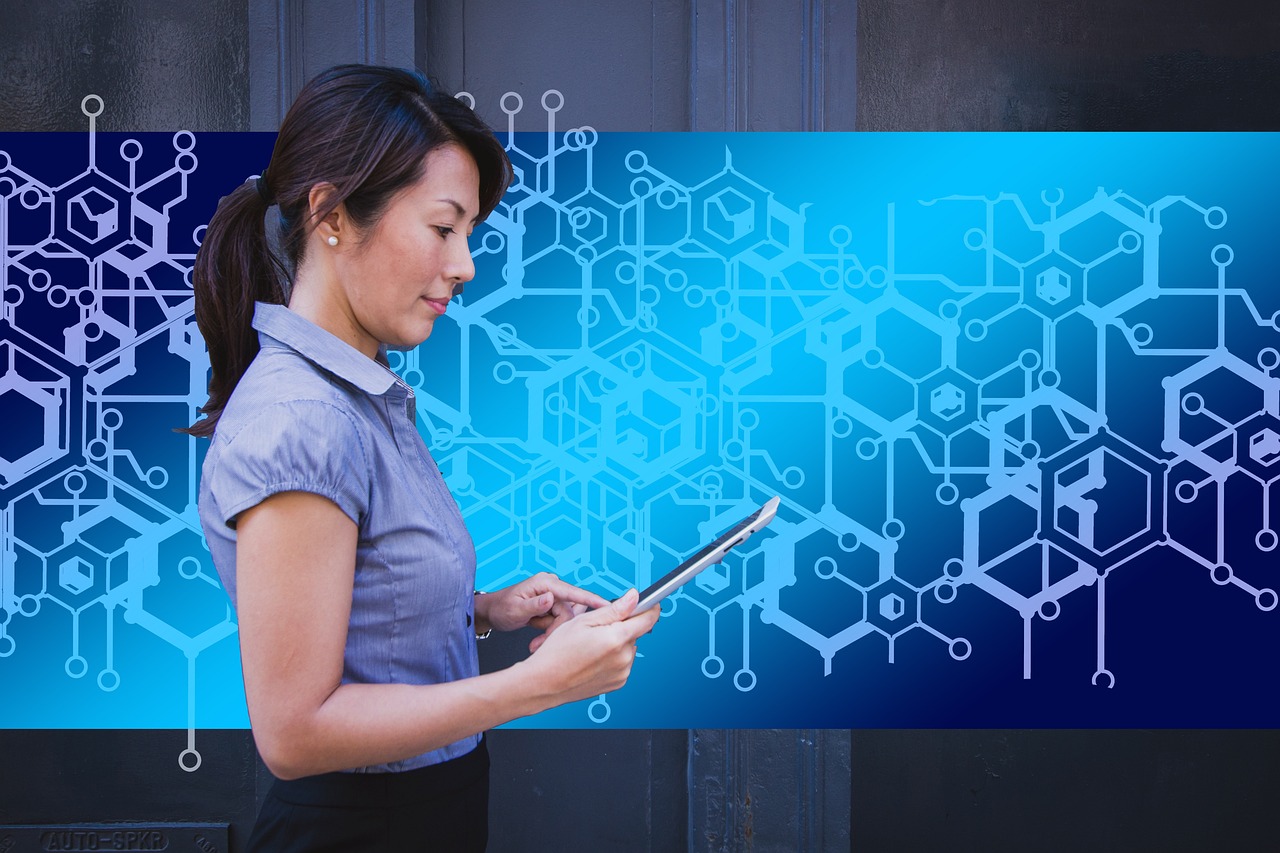
Real-time Tracking of Resources
Imagine being in the midst of a disaster—perhaps a hurricane has just ravaged your community. The chaos is palpable, and the need for immediate aid is critical. In such scenarios, becomes a lifeline, ensuring that help arrives where it is needed most, precisely when it is needed. Blockchain technology, with its inherent capabilities, provides a robust solution for tracking aid supplies, from food and water to medical assistance and shelter materials.
Using blockchain, organizations can create a transparent and immutable ledger that records every transaction related to disaster relief. Each item of aid can be tagged and tracked through the entire supply chain. This means that every time a shipment is dispatched, its journey can be monitored in real-time. Stakeholders, including NGOs, government agencies, and even donors, can access this information, providing them with a clear picture of where resources are and how they are being utilized.
Furthermore, this real-time tracking is not just about knowing where supplies are; it's also about ensuring that they reach the intended recipients. For instance, if a shipment of food is sent to a specific location, blockchain can help verify that it has arrived and has been distributed appropriately. This level of transparency reduces the chances of misappropriation or mismanagement of resources, which can often plague disaster relief efforts.
To illustrate the effectiveness of real-time tracking, consider the following example:
| Resource Type | Initial Location | Current Location | Status |
|---|---|---|---|
| Water Bottles | Warehouse A | Distribution Center B | In Transit |
| Medical Supplies | Warehouse C | Field Hospital D | Delivered |
This table showcases how tracking can provide real-time updates on the status and location of various resources. Stakeholders can quickly assess what is available and what is still en route, enabling them to make informed decisions and respond promptly to emerging needs.
Moreover, the use of blockchain for tracking resources can also facilitate better coordination among different organizations involved in disaster relief. When multiple agencies are working in the same area, sharing information about resource availability and movement can drastically improve efficiency. Instead of duplicating efforts, organizations can collaborate more effectively, ensuring that aid is delivered in a timely manner.
In conclusion, real-time tracking of resources through blockchain technology not only enhances the efficiency of disaster relief operations but also builds a foundation of trust among all stakeholders involved. By ensuring that resources are accounted for and reaching the right people, blockchain can play a pivotal role in transforming how we respond to humanitarian crises.
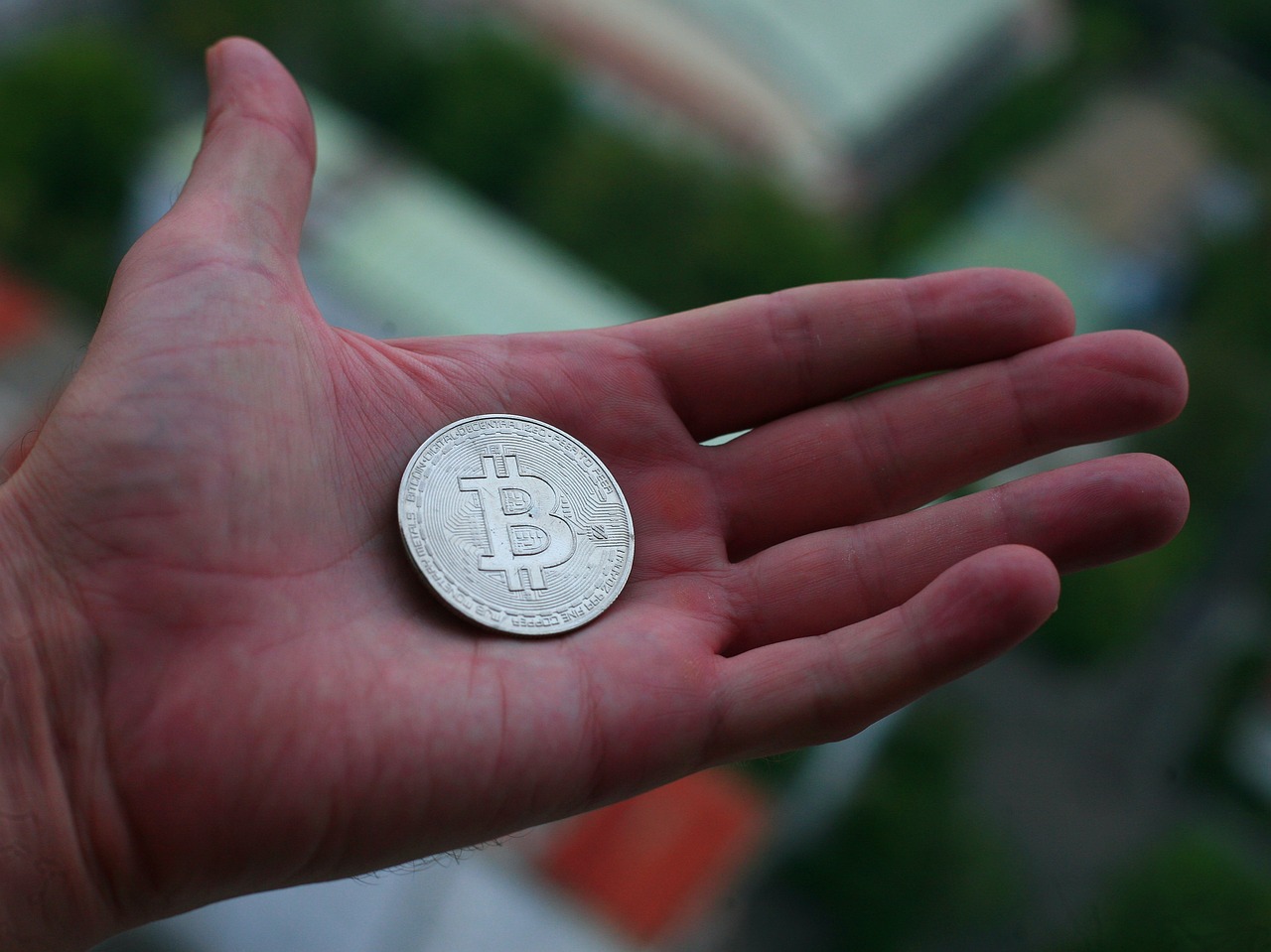
Building Trust Among Stakeholders
In the chaotic aftermath of a disaster, trust becomes a currency more valuable than cash. It’s the glue that holds together the complex web of relationships among donors, non-governmental organizations (NGOs), and government agencies. Blockchain technology plays a pivotal role in fostering this trust by offering a transparent and secure platform for all parties involved. Imagine a world where every transaction, every donation, and every distribution of aid is recorded on an immutable ledger. This is the reality that blockchain brings to the table.
One of the most significant advantages of blockchain is its ability to create immutable records. Each transaction is time-stamped and cannot be altered or deleted, which means that once aid is allocated to a specific cause, it cannot be diverted or misused. This level of transparency ensures that stakeholders can verify the flow of resources and confirm that aid reaches its intended recipients. For instance, if a donor contributes funds for food supplies, they can track how those funds are used, seeing exactly when and where the supplies are delivered.
Moreover, the decentralized nature of blockchain means that no single entity has control over the entire system. This eliminates the risk of corruption or mismanagement that can plague traditional systems. With multiple stakeholders having access to the same information, accountability is heightened. If any discrepancies arise, they can be quickly identified and addressed, fostering a culture of collaboration rather than suspicion.
To illustrate this point further, consider the following elements that contribute to building trust through blockchain:
- Transparency: Every transaction is visible to all stakeholders, reducing the potential for fraud.
- Security: Advanced cryptographic techniques protect sensitive information from unauthorized access.
- Accountability: Stakeholders can easily track the flow of resources, ensuring that everyone is held accountable.
However, building trust is not just about technology. It’s also about relationships. Blockchain can facilitate better communication among stakeholders, allowing them to share insights and updates in real-time. This open line of communication helps to alleviate concerns and fosters a sense of community among those involved in disaster relief. When stakeholders feel that they are part of a cohesive team working towards a common goal, trust naturally follows.
In conclusion, the integration of blockchain technology into disaster relief operations is not merely a technical upgrade; it’s a fundamental shift in how we think about trust and accountability in humanitarian efforts. By ensuring that every transaction is transparent, secure, and accountable, blockchain empowers stakeholders to work together more effectively, ultimately leading to more efficient and impactful disaster relief efforts.
- How does blockchain enhance transparency in disaster relief? Blockchain provides an immutable record of transactions, ensuring that all aid distribution is visible and verifiable by all stakeholders.
- Can blockchain reduce corruption in aid distribution? Yes, the decentralized nature of blockchain minimizes the risk of corruption by making it difficult for any single entity to manipulate the system.
- What are the challenges of implementing blockchain in disaster relief? Some challenges include technological barriers, the need for stakeholder buy-in, and scalability issues.
- Is blockchain technology widely used in disaster relief today? While still in its early stages, there are several promising case studies demonstrating its effectiveness in improving disaster response.

Case Studies of Blockchain in Action
When it comes to disaster relief, real-world applications of blockchain technology are not just theoretical; they are happening right now, making a significant impact on the ground. One standout example is the use of blockchain in the aftermath of the 2017 hurricanes that devastated parts of the Caribbean. Organizations like UNICEF and the World Food Programme (WFP) implemented blockchain solutions to manage and distribute aid effectively. By creating a secure and transparent ledger, these organizations ensured that every donation was tracked from the moment it was received to when it reached the hands of those in need.
In Puerto Rico, for instance, the WFP launched a pilot program that utilized blockchain to distribute cash assistance to families affected by Hurricane Maria. This initiative allowed beneficiaries to receive funds directly, bypassing traditional banking systems that were severely disrupted due to the disaster. The use of blockchain not only expedited the process but also reduced the chances of fraud and mismanagement of funds, which are often prevalent in disaster scenarios.
Another compelling case study comes from the Philippines, where the government partnered with various NGOs to implement a blockchain-based system for tracking donations and aid distribution during Typhoon Haiyan. This initiative was crucial in ensuring that resources were allocated efficiently and transparently. With blockchain, all transactions were recorded in real-time, allowing stakeholders to monitor the flow of aid and identify any discrepancies quickly. It was a game-changer in building trust among donors, NGOs, and the government.
To illustrate the effectiveness of these implementations, let's take a look at a table summarizing the key benefits observed in these case studies:
| Case Study | Organization | Key Benefits |
|---|---|---|
| Hurricane Maria, Puerto Rico | World Food Programme | Direct cash assistance, reduced fraud |
| Typhoon Haiyan, Philippines | Government & NGOs | Real-time tracking, efficient resource allocation |
| Earthquake Relief, Nepal | UNICEF | Transparent donation tracking, improved donor trust |
Moreover, during the 2015 earthquake in Nepal, UNICEF utilized blockchain to create a digital wallet system for aid distribution. This innovative approach allowed for the transparent tracking of funds and ensured that aid reached the intended recipients without unnecessary delays. The digital wallets were linked to beneficiaries' identities, making it easier to verify who received aid and how much. This not only streamlined the process but also enhanced accountability, which is crucial in disaster relief operations.
However, while these case studies highlight the remarkable potential of blockchain technology in disaster relief, it’s essential to acknowledge the challenges that come with it. Issues such as technological barriers, the need for stakeholder buy-in, and the scalability of blockchain solutions can hinder widespread adoption. Yet, the successes observed in these case studies provide a roadmap for future implementations, paving the way for a more efficient and transparent approach to humanitarian aid.
- What is blockchain technology?
Blockchain is a decentralized digital ledger that records transactions across many computers securely and transparently. - How does blockchain improve disaster relief?
It enhances transparency, reduces fraud, and streamlines processes, ensuring aid reaches those in need more efficiently. - Are there any challenges to using blockchain in disaster relief?
Yes, challenges include technological barriers, the need for stakeholder collaboration, and scalability issues. - Can blockchain be used for other humanitarian efforts?
Absolutely! Blockchain has potential applications in various sectors, including healthcare, education, and financial inclusion.

Successful Implementations
Blockchain technology has made significant strides in the realm of disaster relief, with several successful implementations demonstrating its potential to revolutionize how aid is distributed. One standout example is the use of blockchain in the aftermath of the 2017 hurricanes that devastated parts of the Caribbean. Various organizations came together to create a blockchain-based platform that allowed for real-time tracking of donations and supplies. This ensured that every dollar donated was accounted for and that aid reached the hands of those who needed it most. The transparency offered by blockchain made it easier for donors to see where their contributions were going, fostering a sense of trust and accountability that is often lacking in traditional relief efforts.
Another compelling case is the collaboration between the World Food Programme (WFP) and blockchain technology to assist refugees in Jordan. Through a project called Building Blocks, the WFP utilized blockchain to streamline the distribution of food assistance. Instead of relying on cash or vouchers, refugees could use their biometric data to access their entitlements directly. This not only reduced the risk of fraud but also enhanced the speed and efficiency of aid delivery. The success of this initiative has led to discussions about expanding the use of blockchain across other humanitarian efforts globally.
Moreover, the use of blockchain in the Philippines during Typhoon Haiyan showcased how the technology can improve coordination among various NGOs and government agencies. By creating a shared ledger, all parties involved could access real-time data about resource allocation and needs assessment. This collaborative approach reduced duplication of efforts and ensured that aid was delivered where it was most urgently required. The efficiency gained through this system allowed for a more effective response to the disaster, highlighting how blockchain can serve as a vital tool in crisis situations.
In addition to these examples, several startups are emerging with innovative blockchain solutions tailored for disaster relief. For instance, companies are developing platforms that facilitate micro-donations through blockchain, enabling individuals to contribute directly to specific projects or initiatives. This not only empowers donors but also ensures that funds are used effectively, as blockchain allows for meticulous tracking of every transaction.
As we look ahead, the successful implementations of blockchain in disaster relief serve as a blueprint for future efforts. By leveraging this technology, humanitarian organizations can enhance their operational efficiency, improve transparency, and ultimately, save more lives. The lessons learned from these case studies underscore the importance of collaboration, innovation, and a willingness to embrace new technologies in the face of humanitarian crises.
- What is blockchain technology? Blockchain is a decentralized digital ledger that records transactions across multiple computers in a way that the registered transactions cannot be altered retroactively.
- How does blockchain improve disaster relief? It enhances transparency, reduces fraud, and allows for real-time tracking of resources, ensuring that aid reaches those in need more effectively.
- Can blockchain be used for other humanitarian efforts? Absolutely! Blockchain has potential applications in various areas of humanitarian aid beyond disaster relief, including refugee assistance, health care, and food security.
- What are the challenges of implementing blockchain in disaster relief? Some challenges include technological barriers, the need for stakeholder buy-in, and ensuring that the technology is accessible to all parties involved.
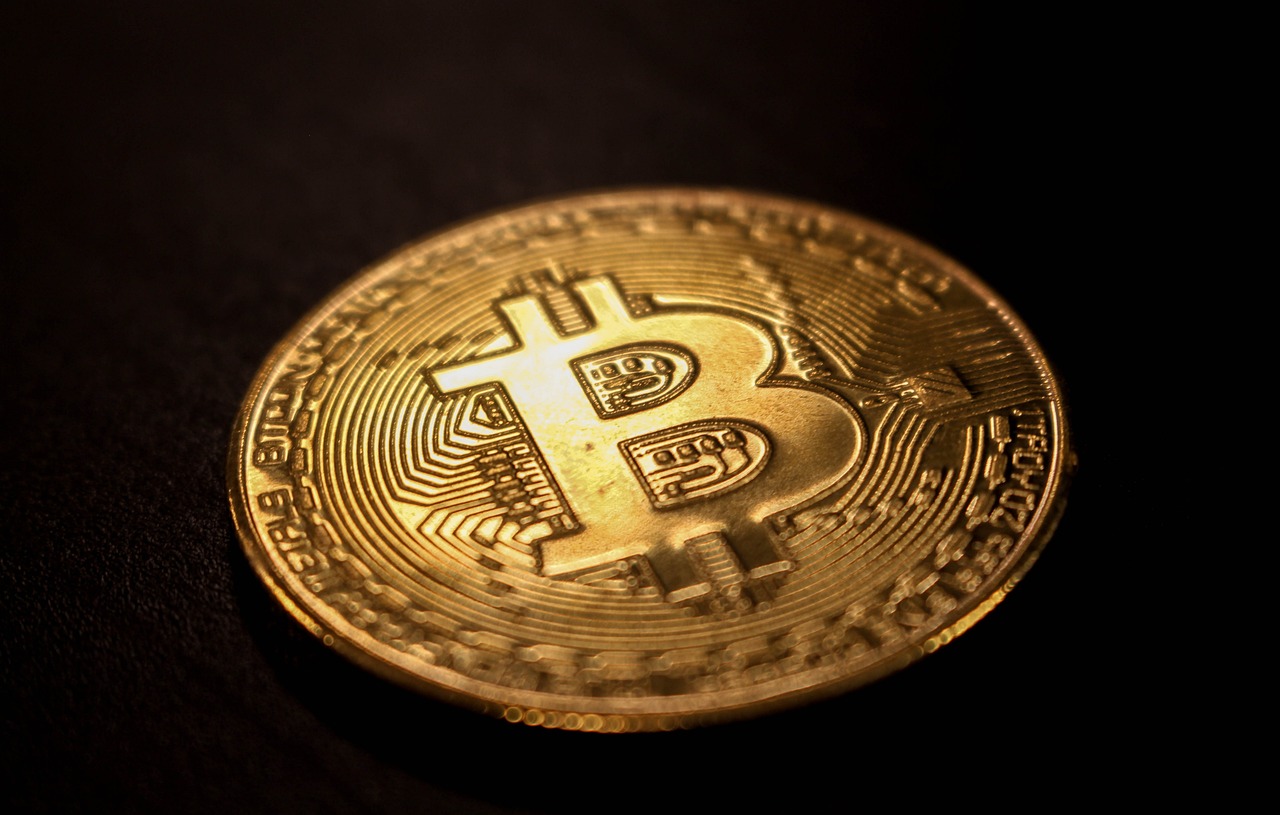
Challenges and Limitations
While blockchain technology presents a plethora of opportunities for enhancing disaster relief operations, it is essential to recognize the that accompany its implementation. One of the most significant hurdles is the technological barrier. Many disaster relief organizations may lack the technical expertise required to effectively deploy and manage blockchain solutions. This gap can lead to inefficiencies and underutilization of the technology, ultimately hindering its potential benefits.
Moreover, the issue of scalability cannot be overlooked. Blockchain networks, especially those that rely on proof-of-work mechanisms, can face challenges when it comes to processing a high volume of transactions quickly. In disaster scenarios where time is of the essence, delays in transaction confirmations could result in critical aid not reaching those in need promptly. This limitation raises questions about the practicality of blockchain in high-pressure situations.
Another significant challenge is the need for stakeholder buy-in. For blockchain to be effective in disaster relief, all parties involved—donors, NGOs, government agencies, and affected communities—must be willing to adopt and trust the technology. This requires a cultural shift and education about the benefits and functionalities of blockchain. Without widespread acceptance, the implementation of blockchain solutions may face resistance, thereby limiting their effectiveness.
Additionally, the cost of implementation can be a deterrent for many organizations, especially those operating on tight budgets. Setting up a blockchain infrastructure can be expensive, requiring investment in technology, training, and ongoing maintenance. These costs can divert funds away from direct aid efforts, which is counterproductive in a disaster relief context.
Lastly, there are regulatory and legal challenges that can complicate the use of blockchain in humanitarian efforts. Different countries have varying regulations regarding data privacy, cryptocurrency, and digital transactions. Navigating this complex legal landscape can be daunting for organizations looking to implement blockchain solutions. Compliance with these regulations is crucial to avoid legal repercussions and ensure the smooth operation of blockchain initiatives.
In summary, while the potential of blockchain in disaster relief is significant, it is crucial to address these challenges head-on. By understanding the limitations and working collaboratively to overcome them, stakeholders can harness the full power of blockchain technology to improve the efficiency and transparency of humanitarian aid.
- What is blockchain technology? Blockchain is a decentralized digital ledger that records transactions across many computers in a way that ensures the security and transparency of data.
- How does blockchain improve disaster relief? By providing transparent and immutable records, blockchain enhances the accountability of aid distribution and reduces the risk of misappropriation of resources.
- What are smart contracts? Smart contracts are self-executing contracts with the terms of the agreement directly written into code, allowing for automated processes in various applications, including disaster relief.
- What challenges does blockchain face in disaster relief? Challenges include technological barriers, scalability issues, the need for stakeholder buy-in, implementation costs, and regulatory hurdles.
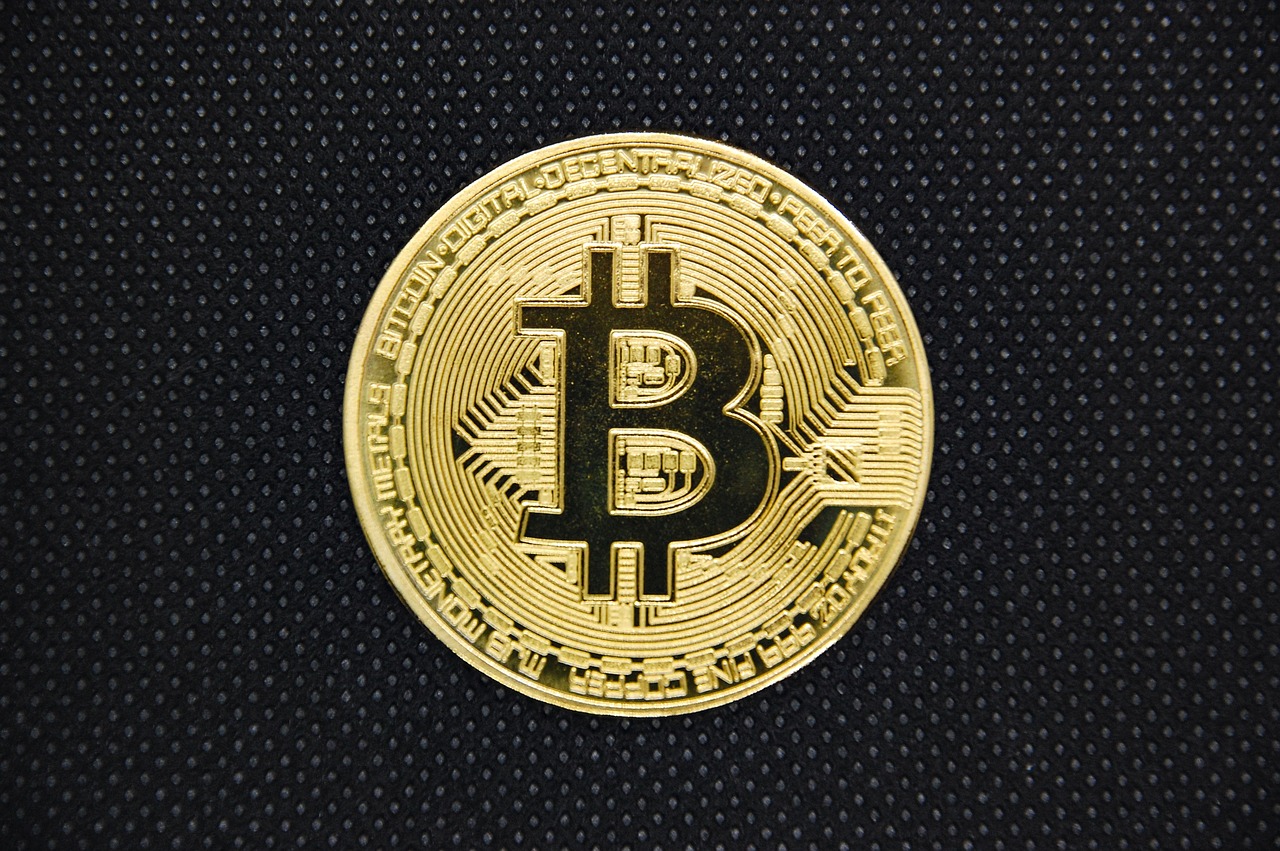
The Future of Blockchain in Humanitarian Aid
As we gaze into the horizon of humanitarian aid, the role of blockchain technology is poised to become even more transformative. Imagine a world where every transaction related to disaster relief is not only transparent but also secure and instantaneous. This is the promise that blockchain holds, and as advancements continue, we can expect to see innovative applications that will revolutionize how aid is distributed and managed.
One of the most exciting prospects is the integration of blockchain with other emerging technologies. For instance, when combined with artificial intelligence (AI), blockchain could facilitate predictive analysis to identify regions at risk of disasters before they occur. This proactive approach could enable organizations to allocate resources more effectively and prepare for potential crises. Additionally, Internet of Things (IoT) devices can feed real-time data into the blockchain, providing up-to-date information on the status and location of aid supplies. This interconnectedness could create a robust ecosystem where data is shared seamlessly among stakeholders, enhancing the overall efficiency of humanitarian operations.
Furthermore, the concept of digital identities is gaining traction. In many disaster-stricken areas, individuals often lack formal identification, making it challenging to distribute aid equitably. Blockchain can offer a solution by providing a secure and verifiable digital identity for affected individuals. This would not only streamline the aid distribution process but also ensure that resources reach the intended recipients without bias or discrimination.
As we look to the future, it's also important to consider the role of community engagement. Blockchain technology can empower local communities by involving them in the decision-making process. For example, through decentralized applications (dApps), community members can vote on how aid should be allocated or which projects should be prioritized. This participatory approach can foster a sense of ownership and accountability, making aid efforts more effective and sustainable.
However, while the future is bright, it is essential to acknowledge the challenges that lie ahead. Scalability remains a significant hurdle; as the number of transactions increases, so does the need for robust infrastructure to support them. Additionally, there is a need for widespread education and training for stakeholders to ensure they can effectively utilize blockchain technology. Without proper understanding and buy-in, the potential benefits of blockchain may not be fully realized.
In conclusion, the future of blockchain in humanitarian aid is filled with possibilities. From enhancing transparency and efficiency to fostering community involvement and creating secure digital identities, the potential applications are vast. As we continue to explore and invest in this technology, we can pave the way for a more resilient and responsive humanitarian sector.
- What is blockchain technology? Blockchain is a decentralized digital ledger that records transactions across multiple computers, ensuring that the recorded transactions cannot be altered retroactively.
- How can blockchain improve disaster relief? By ensuring transparency, reducing administrative costs, and enabling real-time tracking of resources, blockchain enhances the efficiency and accountability of disaster relief efforts.
- What are smart contracts? Smart contracts are self-executing contracts with the terms of the agreement directly written into code, allowing for automated processes in various applications, including disaster relief.
- What challenges does blockchain face in humanitarian aid? Key challenges include scalability issues, the need for technological infrastructure, and the necessity for stakeholder education and buy-in.
Frequently Asked Questions
- What is blockchain technology?
Blockchain technology is a decentralized digital ledger that records transactions across multiple computers. This means that once data is entered, it cannot be altered without the consensus of the network, ensuring transparency and security.
- How does blockchain enhance disaster relief operations?
Blockchain enhances disaster relief by providing a transparent, immutable record of transactions. This ensures that aid reaches those in need without misappropriation, streamlining the process and increasing accountability among stakeholders.
- What are smart contracts, and how do they work in disaster relief?
Smart contracts are self-executing contracts with the terms of the agreement directly written into code. In disaster relief, they automate processes, reducing the need for intermediaries, which speeds up the delivery of aid to affected areas.
- Can blockchain reduce administrative costs in disaster relief?
Absolutely! By minimizing paperwork and automating various processes, blockchain helps organizations streamline operations, allowing more funds to be directed towards actual aid efforts rather than administrative overhead.
- How does blockchain enable real-time tracking of resources?
Blockchain allows for real-time tracking by providing up-to-date information on the location and status of aid supplies. This ensures that all stakeholders can access accurate data regarding resource distribution, enhancing coordination and efficiency.
- What challenges does blockchain face in disaster relief?
Some challenges include technological barriers, scalability issues, and the need for stakeholder buy-in. These factors can hinder the widespread adoption of blockchain in disaster relief operations.
- Are there any successful case studies of blockchain in disaster relief?
Yes, there are several case studies showcasing successful implementations of blockchain in disaster relief. These examples highlight innovative solutions and the positive outcomes achieved through the use of this technology.
- What is the future of blockchain in humanitarian aid?
The future looks promising! Ongoing research and advancements in blockchain technology may lead to even more applications in humanitarian aid, improving efficiency, transparency, and overall effectiveness in disaster relief efforts.


